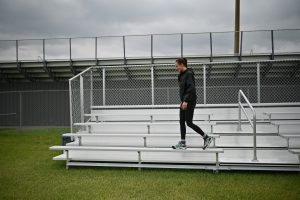Post-Op Months 3-9
I talk about getting past the first few months of rehab and putting in the work for the year.
Prepare yourself for the long haul
The first few months feel slow, especially as a patellar graft where you have to be aware of the movements of your knee as it can aggravate the graft site and potentially cause anterior knee pain. This is something to discuss with your physio, with proper programming, you should be fine! I never suffered from anterior knee pain throughout this entire process.

Rehab also should not stop at the point of returning to running, or at 8 months post-op, or even once you return to sport (at 12 months post-op). There should be ongoing maintenance for some time following as well as a general plan for when you stop seeing your physio.
Since the process is quite long and daunting, you and your physio should have discussions on having rest weeks. The mental and physical commitment to this rehab process is intense. To keep yourself going and motivated you need breaks. I took some weeks where I didn’t do any planned rehab just general movement, as well as had a vacation. Enjoy these!
Your rehab MUST include testing
ACL rehab is a slightly specialized area because of the risk of re-injury and how a solid rehab plan compared to a piece of paper with 3 exercises can make a big difference in your knee function and quality of life following an ACLR.

At ORKA Performance where I’ve had my rehab, we complete muscle strength testing (isometric holds) every 4-6 weeks especially of the quads and hamstrings. Quad strength is NECESSARY for reducing injury risk, osteoarthritis risk and increasing function of your knee, it should also be tested prior to being cleared to run. For those with hamstring grafts, getting your hamstring strength back can be up to a 2 years process and if it isn’t measured, how do you know where you are at?
We also test my jumps – double leg, single leg, continuous, fatigued and drop jumps. These give us so much information like my eccentric control/rate of force development, my reactive strength index, how my tendons are storing and releasing energy, and concentric rate of force development. All extremely important in the return to sport process to ensure I have the capacity to decelerate and change direction.
Make small goals and celebrate when you reach them

When I was cleared to run I wrote out what I wanted to achieve over the next 3-4 months following:
- Run painfree
- Trail run up to 7km
- Feel comfortable at my 5km pace
When I was comfortable riding my bike outdoors, I made this goal:
- Ride the same distance as last year (60km)
Without your usual sport, you might feel lost in the rehab process, so writing out small goals and striving towards them will give you a sense of purpose.
I am now 9 months post-op and kicking a ball around by myself and with my boyfriend feeling fairly comfortable. It is recommended for the general population to wait until at least 12 months before returning to your pivoting sport. I’ll gear up for snowboarding this winter and then into spring/summer soccer next year!
You can purchase the ACL Injuries ebook where I talk about my experience, what to expect, graft options, how to find a physio, the mental aspect of the injury, and physical timelines to expect during recovery.
You can find my Guides on Instagram here:
If you have questions regarding ACLR, I do recommend you speak to your own physio and surgeon as they know your injury. There are a few instagram pages that have great resources for those going through an ACLR which you can find here:


